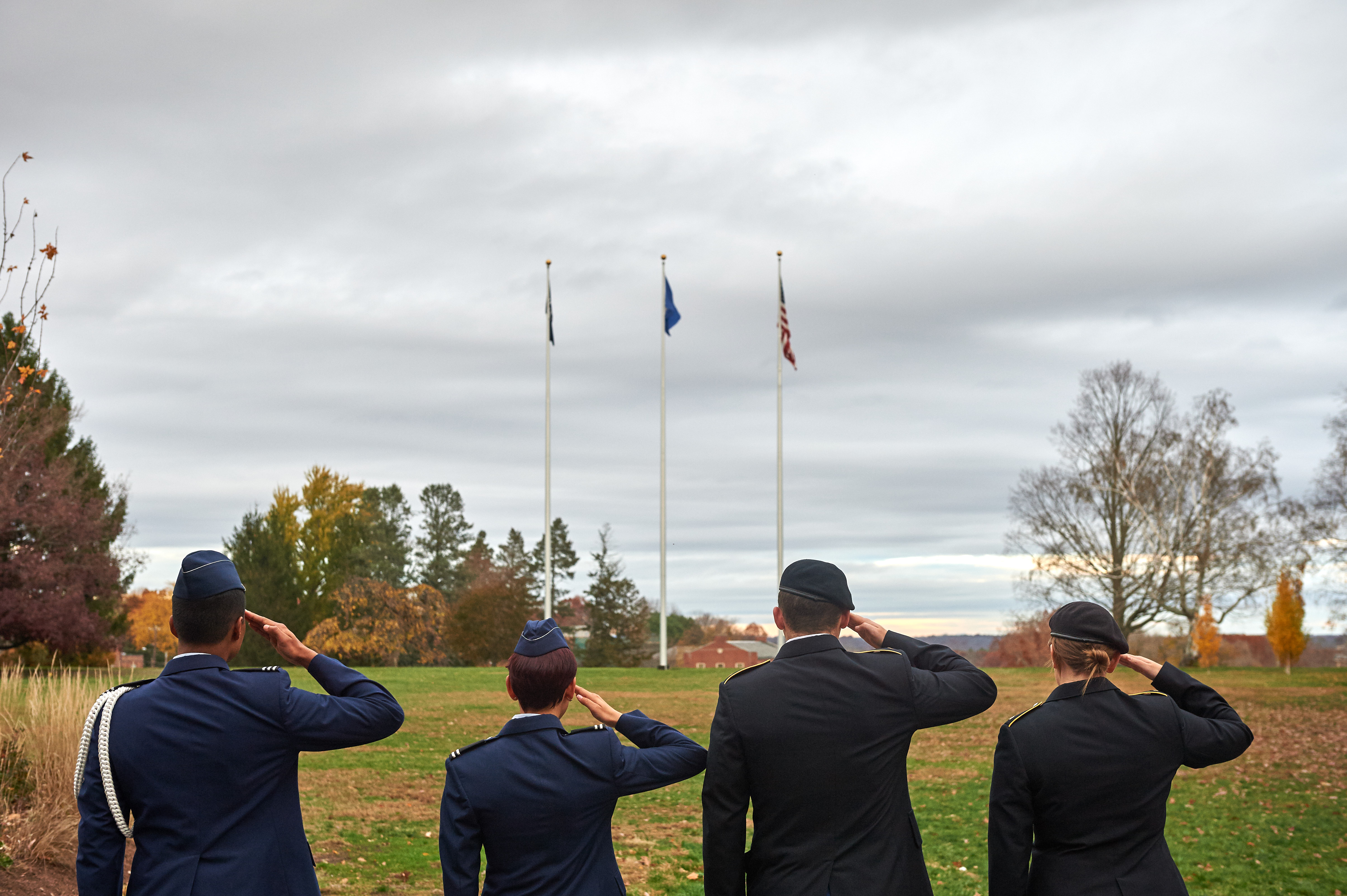Monday, May 25 is the date set aside this year for the observance of Memorial Day, and while many of the familiar aspects of the day – parades and cookouts among them – will be curtailed or canceled because of the COVID-19 pandemic, the occasion still offers a chance to reflect on the meaning of the holiday both nationally and here at UConn.
Although it’s only been a federal holiday since 1971, Memorial Day’s roots go back to the Civil War. It was first widely observed starting in 1868, when the Grand Army of the Republic, an organization of Union Army veterans, held a massive commemoration at Arlington National Cemetery. After World War I, what had been known as Decoration Day expanded to encompass honoring the memory of fallen Americans from every conflict.
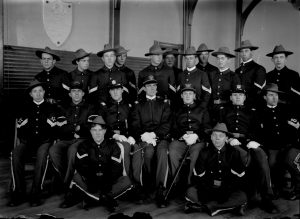
UConn’s roots also stretch back to the Civil War, albeit indirectly: the very first building in what would become the University of Connecticut was originally built in 1865 as a home for children orphaned by the war. After the last of its 200 residents left in 1875, the building was sold by the Whitney family to the Storrs brothers, who made it part of the gift of land that founded what was first called the Storrs Agricultural School (members of the Whitney family played important roles in the University for decades, and their home, now owned by UConn, still stands on Rte. 195, not far from the residence hall named for Edwina Whitney).
Military instruction was part of the institution’s curriculum from its earliest years, with participation in drills obligatory for male students, and a succession of officers from the U.S. Army assigned to the college as professors of military science from the 1890s on.
The University mourned its first fallen graduate in 1898, when Willis Nicholas Hawley, a football player and member of the Shakespearean Club who had graduated that spring, died of typhoid fever in an Army camp while waiting to be deployed during the Spanish-American War.
“His sacrifice was all the more appalling because it represented vicissitudes of war far removed from the battlefields,” wrote University historian Walter Stemmons in 1931.
Today, Hawley’s memory lives on in the building named for him, the armory that for decades served as the center of campus life, where everything from commencement ceremonies to basketball games were held.
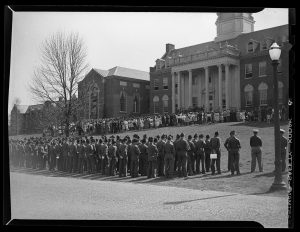
Just three years after Hawley Armory was built, the United States entered World War I, a conflict in which more than 600 UConn students, faculty, or alumni fought, with seven killed in action, including a member of the Storrs family, Richard A. Storrs, who died in France two days after the armistice that ended the war.
World War I saw a large-scale mobilization of campus for the war effort, and the move of women students into campus leadership positions for the first time. This was only a foretaste of what would come with World War II, when the University transformed itself into a resource for the conflict, in everything from scrap metal drives to air raid exercises in which makeshift buildings were destroyed by real military-grade incendiary bombs.
The war also saw 110 students, faculty, and alumni give their lives during the conflict. Once it was over, a special temporary campus designed for veterans was built at Fort Trumbull in New London, with nearly 1,200 GIs enrolling in the fall of 1946.
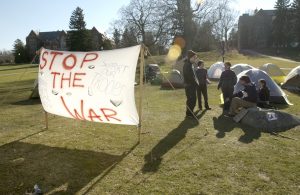
There were also roughly 100 non-veterans at Fort Trumbull, leading to incongruous roommate situations like the one experienced by alumnus J. Dennis Pollack, who described his freshman year dorm mates this way: “One had jumped into Belgium, won the Belgian Croix de Guerre and still had shrapnel pieces coming out of his back, another roommate was torpedoed, adrift for three days with shark bites on his leg, wow, what an awakening! I had just graduated from high school.”
UConn students and alumni would continue to serve and sacrifice in all subsequent conflicts involving the United States, but the total mobilization of the two world wars would never occur again. In later years, the University community would be sharply divided on the subject, divisions that were most intense during the Vietnam War, which included numerous anti-war demonstrations and the brief occupation by protesters of the ROTC facility in Storrs, which they sought to turn into a daycare center.
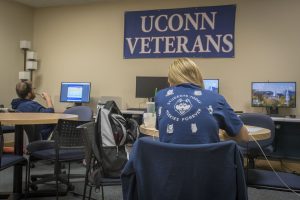
Today, UConn remains a place for robust debate, and it also remains a welcoming and supportive environment for veterans, 85 of whom were among the Class of 2020. From the Veterans Oasis in the Student Union to the Ultimate Sacrifice Memorial in front of Wilbur Cross to the Office of Veterans Affairs and Military Programs located in the armory named for Willis Hawley, UConn has made it a priority to honor the sacrifices of Huskies who served in the military and to provide for the needs of present and future veterans.
The UConn Roll of Honor, which lists the names of students, faculty, and alumni who gave their lives in the service of the country, is online here.
